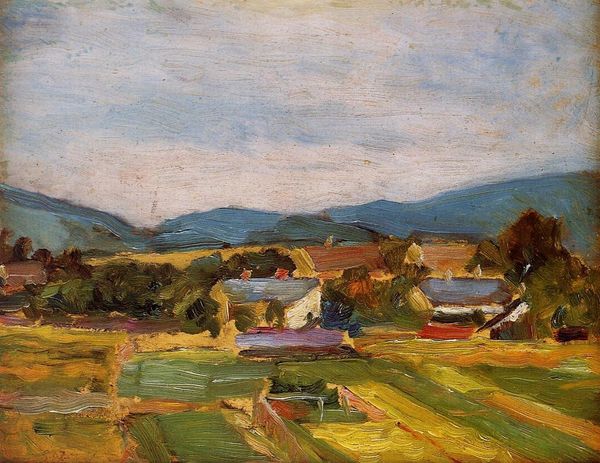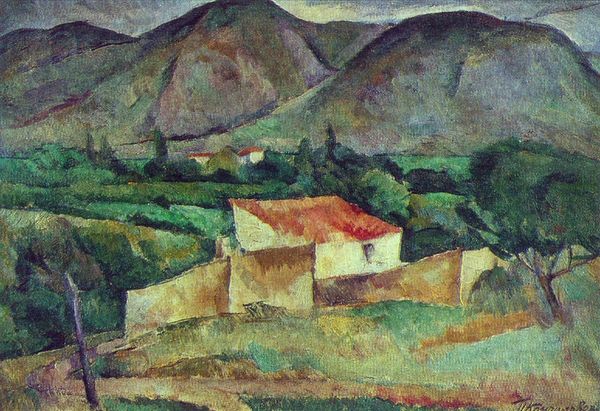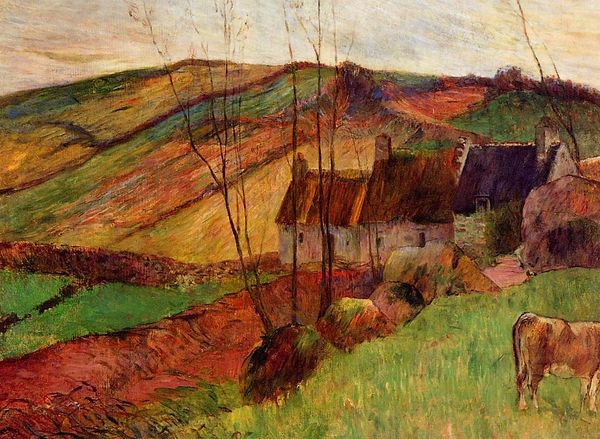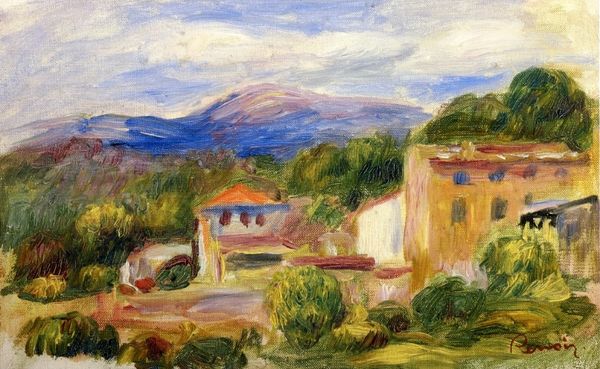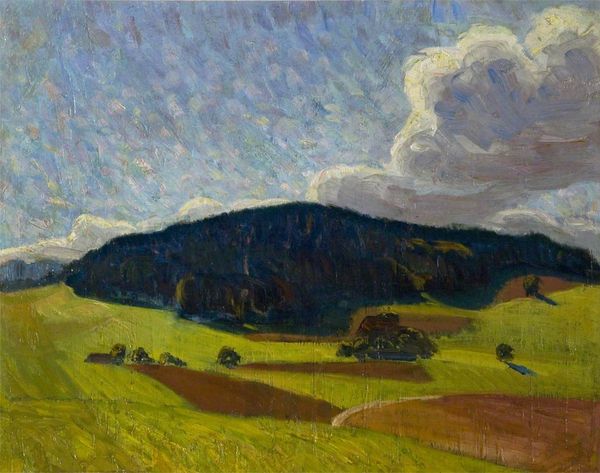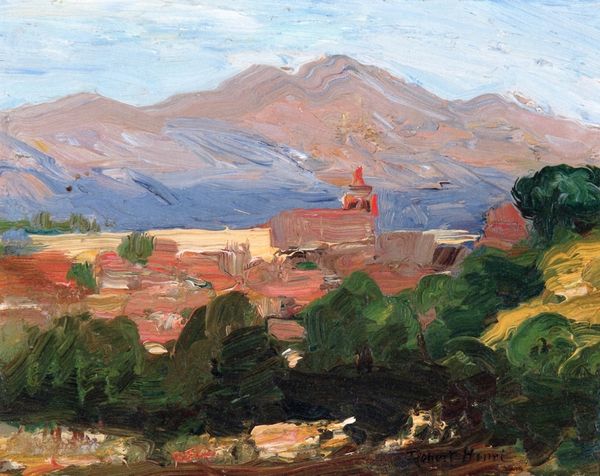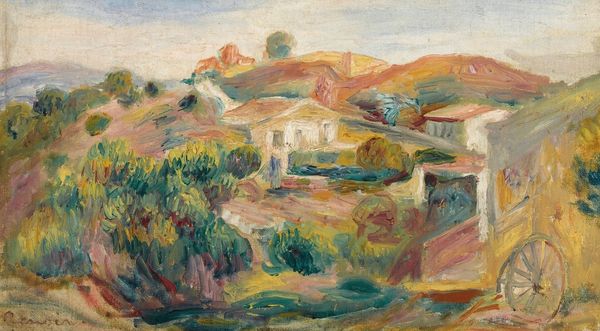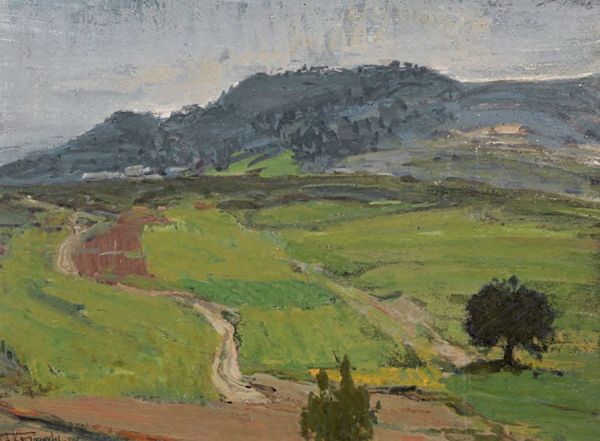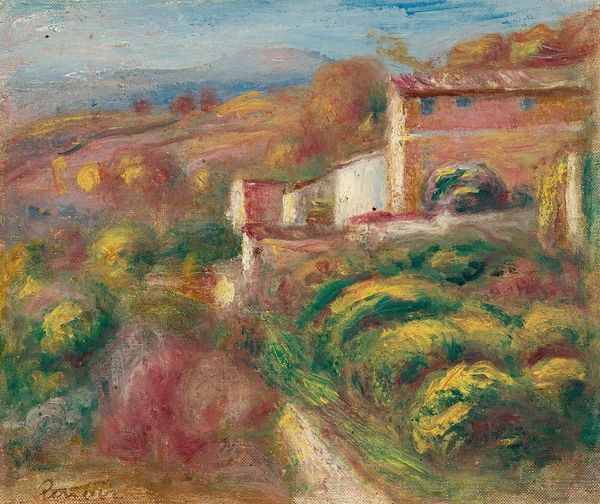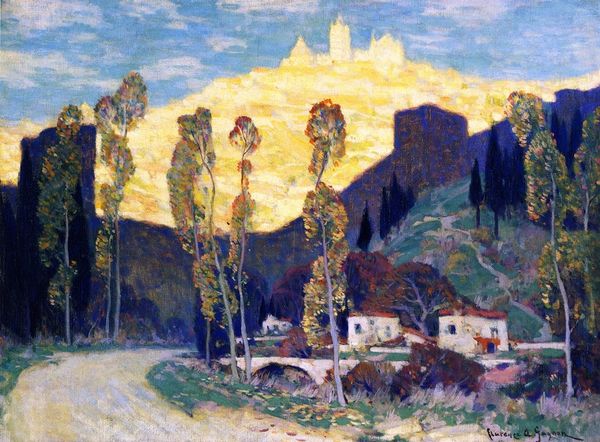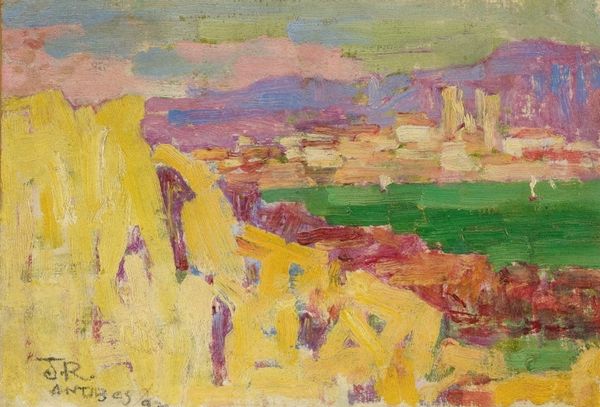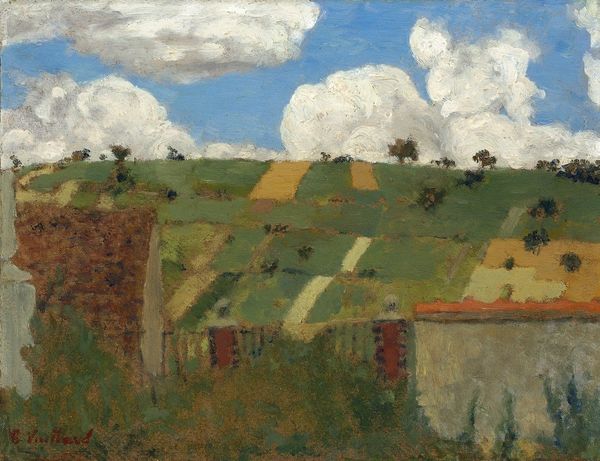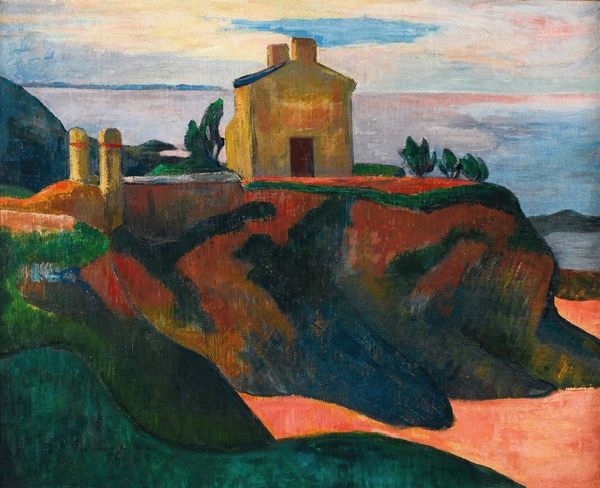
painting, oil-paint
#
painting
#
oil-paint
#
landscape
#
german-expressionism
#
house
#
impressionist landscape
#
oil painting
#
mountain
#
expressionism
#
cityscape
Dimensions: 21.7 x 28 cm
Copyright: Public domain
Editor: So, here we have Egon Schiele's "Village with Mountains," painted in 1907, using oil paint. There's something very immediate about it; the application of the paint feels thick and quite deliberate. What jumps out at you about this work? Curator: What strikes me is the very visible labor inherent in the painting process. Look at how the brushstrokes build up the form. Schiele isn't trying to hide the fact that this is made, constructed. How does that visible labor speak to you, considering the subject? Editor: I see what you mean. It’s almost like he’s highlighting the act of building the landscape, both physically with the paint and metaphorically, with the houses forming the village. So, in that way, how might this fit into a larger social context? Curator: Well, consider the rise of industrialization at this time, the shift from agrarian societies. The handmade nature of the painting stands in stark contrast to the mass-produced goods of the era. Schiele is choosing to emphasize the value of individual craft, even as that value is being challenged by industrial production. Do you think the materiality contributes to that reading? Editor: Absolutely! The tangible texture of the paint, the clear evidence of the artist's hand...it all points to a conscious decision to highlight the human element in artmaking. This feels far from the detached aestheticism of some movements at the time. It makes you wonder about the community depicted here and their connection to the land and its materials. Curator: Precisely! It asks us to reconsider what we value in art – not just the image itself, but the whole process of its making, and the social values it represents. This emphasis on the material challenges conventional notions of 'high art'. Editor: That's fascinating! It’s really shifted my perspective on the painting. I now see this landscape as more than just a pretty scene. I notice the cultural statements about craft within industrialization because the mark-making calls attention to itself. Curator: Exactly. Considering materiality and production expands how we might approach art history, emphasizing process over mere aesthetics.
Comments
No comments
Be the first to comment and join the conversation on the ultimate creative platform.
